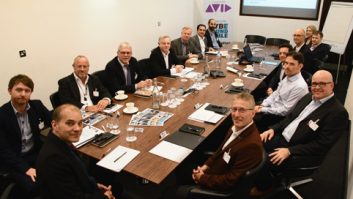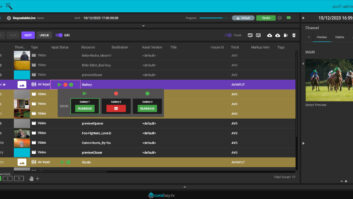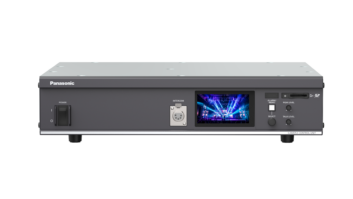
When it comes to change, broadcasting is no different from any other enterprise involving technology. Several years ago, the qualifying term ‘IP-based’ was associated with computer and data transport, and not part of the broadcast environment. Now, it’s almost impossible to attend a tech conference or stroll the aisles at any broadcast equipment exhibit without being inundated with IP, yet many of us are still uncomfortable with the concept of exchanging coax and shielded twisted-pair cables for the CAT variety and everything that goes with it. Moving into this new world with small steps may be the best approach.
Nothing is more permanent than change
Our industry is rapidly shifting to an IP-driven platform, so sooner or later you’ll want to get on the IP bandwagon. If you look back at the technical side of broadcasting, it has always been in flux. If you’re old enough, you’ll remember the shift from vacuum tubes to transistors. In the late 1960s, it was the push from television in black and white to the wonderful world of colour. A move away from discrete transistors to integrated circuits and microprocessors was soon followed by the digital revolution, ending analogue video and audio’s long run and commencing the transition to SDI and AES. I’m sure you can recall many other ‘sea changes’ if you’ve been in television production and the broadcasting industry for any length of time. Once we create a new infrastructure and have it running to satisfaction, it seems it’s inevitably time to start replacing it with new technology.
This brings me back to IP. Like it or not, it is destined to be the next major game changer in our industry. Just a few years ago, the technology was safely relegated to the world of computers, then, little by little, like computer technology in general, it moved into our arena. Now it’s become virtually impossible to ignore. The switch to IP, like any other change, brings with it some amount of uncertainty, a fear of the unknown. That’s a normal human reaction, but IP is hardly unknown. The business of transporting data packets through a network between sources to multiple destinations has been around for a very long time. If it weren’t reliable, there would be no internet and we’d still be sending out lots of letters, telegrams, and telexes (remember those?) when we needed to communicate outside our immediate environment.
IP brings multiple advantages
Once you get beyond the intangible nature of IP connectivity, there’s really a lot to recommend: no more expensive, heavy and bulky double-shielded coax and shielded twisted-pair audio cables with labor-intensive connectorisation; no more multicore control cables; and no need for separate control, video, programme audio or intercom cables, since all these signals can share the same CAT-type cable if you really want them to.
IP also reduces everything down to a common data denominator. The progressively larger and more expensive audio and video routers we rely on can be replaced with inexpensive, off-the-shelf data switches. Equipment manufacturers understand this, too, developing new products that will make it easier to bring IP technology into your own realm.
Transitioning to an IP-based environment
Perhaps the best way to gain a comfort level with a new technology, like IP, is through a gradual transition – the same way we moved from tubes to transistors, monochrome to colour, analogue to digital, and more recently from SDTV to HD and beyond. As its newness and unfamiliarity decreased, first small and then larger implementations of each new technology went online, gradually pushing outmoded gear and practices out the door.
Thanks to some very substantial technology and product inroads made in IP-based audio over the past few years, now is a very good time to test the IP audio waters. Should you start your own IP transition with an audio installation, the inclusion of proper monitoring equipment is a critical element (the days of plugging headphones into patch panels or VU meter bridging when troubleshooting are over). When selecting a monitoring device, it’s important to choose one that can accommodate multiple networking protocols (the industry hasn’t yet settled on one standard way of moving data packets around; support for AES67, Dante, Ravenna, etc is key). Support for legacy analogue and AES sources in a world of existing audio signals is equally important: it simplifies operations, saves space and is more cost-effective than using multiple devices.
IP is destined to revolutionise all broadcasting and teleproduction facilities, so you need to start preparing for it today.
By Craig Newbury, vice president of sales and marketing, Wohler







